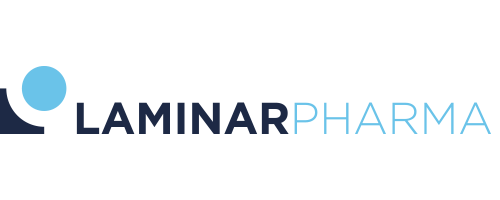05 Jun Final results of the MIN-001-1203 study with 2OHOA in oncology presented at ASCO 2017 annual meeting in Chicago
54 patients with advanced solid tumours have participated in the Phase I/IIa clinical study with 2OHOA, half of them with malignant glioma. Primary objective has been achieved, with the definition or the MTD, the confirmation of an excellent safety profile, even at doses well above the expected therapeutic range and the identification of the recommended Phase 2 dose (RP2D). A favourable PK profile, with no food‑effect interactions and supporting oral dosing of 2OHOA was also determined. Very encouraging clinical activity has been observed in at least 8 patients with recurrent solid tumours, five of them with malignant glioma. Preliminary biomarkers analysis confirm biological activity of 2OHOA in patients and several potential plasmatic biomarkers have already been identified for future development and validation.
Palma de Mallorca. June 5th 2017
Laminar Pharma, a pioneering clinical stage biopharmaceutical company developing a new generation of products modulating metabolism of membrane lipids based on the groundbreaking MLT platform, announced today that the final results of the of MIN-001-1203 clinical study with 2OHOA in patients with advanced solid tumours, including malignant glioma, have been presented at a poster session within the Developmental Therapeutics and Translational Research track at the 2017 ASCO meeting in Chicago. 5 leading clinical investigational sites in Spain and in the UK have participated in this study.
2OHOA, administered as an oral suspension two (BID) or three (TID) times daily, has been generally well tolerated in monotherapy up to 12 g/day, while patients have had difficulties to handle the large volume of liquid intake required for 16g/day (8 g BID), experiencing frequent gastrointestinal effects. Overall 54 patients have received 2OHOA at different doses. One Dose Limiting Toxicity (DLT) was reported at the dose of 12g/day and 3 DLT at 16g/day. 12G/day (4g TID) was confirmed as the maximum Tolerated Dose (MTD) since there were no DLTs reported in the second part of the study conducted with this dose (expansion phase)
No drug-related serious adverse events or other relevant toxicity effects associated to the investigational product have been reported in any of the 54 patients treated, other than the tolerability issues experienced at the highest dose levels (gastrointestinal effects). Study drug related AE (≥10%) at any grade were diarrhoea (53 [26%]), vomiting (29[14%]), nausea (26 [13%]). No G3/G4 whether regardless of study drug relationship or suspected as being study drug related occurred over 10% of patients.
Pharmacokinetic (PK) profile was determined. 2OHOA was quantifiable in all dose levels and maximum concentration (Cmax) was reached at 1 hour after administration in the fasted state. When administered under fed conditions, 2OHOA had bioavailability comparable to that found in the fasted state, although food caused a non-clinically significant delay in the time needed to reach the CMax. Therefore, 2OHOA could be taken without regard to food. The half-life was between 1.4 and 4.6 hours up to 8g/day, increasing to more than 7h at the higher doses. Systemic exposure of 2OHOA increased in proportion to dose following single and repeat BID administration. After repeat BID dosing, systemic exposure of 2OHOA, increased between 1- and 1.7-fold from first dose on Day 1 to last dose on Day 21. PK data supports the planned twice-a-day oral administration of 2OHOA
Very encouraging anti-cancer activity of 2OHOA as single agent has been confirmed in several recurrent, heavily pre-treated patients, including 5 recurrent High Grade Glioma (rHGG) and 3 with other advanced solid tumours (AST). One recurrent glioblastoma (rGBM) pt had sustained partial response for more than 2.5 years (93% shrinkage of target lesion) and 4 rHGG patients (3 GBM) achieved stable disease (SD), by RANO, for at least 6 months. Other 3 AST patients had clinical benefit by RECIST: 1 with mesothelioma (SD for 10 months), 1 with colorectal cancer (SD for 3 months) and 1 with lung metastasis of biliary duct carcinoma (SD for 5 months)
Preliminary analysis of available biomarkers data confirms biological activity by 2OHOA in cancer patients. On the one hand, a reduction of GFAP levels in plasma from rHGG patients after 8 days of treatment was observed in more than 80% of patients analyzed. Average reduction in GFAP levels in the whole set of patients was 20% (n=15). On the other hand, initial analysis of plasma miRNA expression profiles in a subset of 22 patients, shows that at least 3 miRNA were differentially expressed in response to 2OHOA treatment. Target gene analysis of these miRNA is ongoing. These, and other potential plasmatic biomarkers currently being analyzed, are expected to be developed and eventually validated in future clinical studies with 2OHOA, providing valuable support for patient selection strategies and for clinical study design.
Further clinical studies with 2OHOA are currently under preparation, including a Phase IIb study to evaluate the potential clinical benefit of adding 2OHOA to the current Standard of Care (SoC) in patients with newly-diagnosed glioblastoma, given that “the preliminary antitumor activity including a sustained PR in heavy pretreated rHGG pt warrants further investigation in a Ph2 study”, as concluded in the poster presented by Dr. A. Azaro, Principal investigator at Vall d’Hebron Institute of Oncology (VHIO), one of the 5 sites participating in this study, and the first author of the poster presented at ASCO.
Laminar Pharma is also preparing a PI trial in children with malignant glioma and other advanced cancers is being prepared in the USA, with the collaboration of top clinical investigational institutions in New Jersey and Boston.

